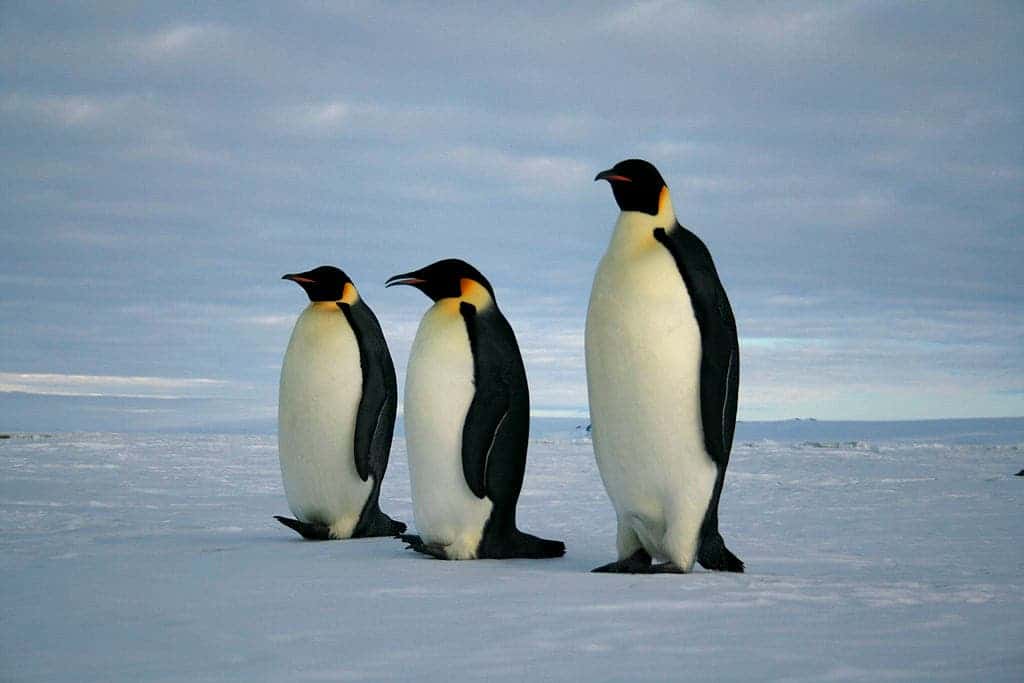The US has declared the emperor penguin, the tallest and bulkiest of all the world’s penguins, as a threatened species due to the existential risk they face because of climate change. The penguins, endemic to Antarctica, face extinction from the loss of sea ice, on which they rely to breed, feed, and protect themselves from predators.

The Center for Biological Diversity had asked the US Fish and Wildlife Service to protect the emperor penguin back in 2011, claiming the loss of sea ice because of climate change will put the penguin’s long-term survival at risk. A group of scientists reiterated the same claim last year, publishing a study that highlighted the risks faced by penguins.
“This listing reflects the growing extinction crisis and highlights the importance of the ESA and efforts to conserve species before population declines become irreversible,” Fish and Wildlife Service Director Martha Williams said in a media statement. “The listing of the emperor penguin serves as an alarm bell but also a call to action.”
The risks of the emperor penguins
Emperor penguins can stand up to four feet tall and are known for their parenting methods, with males and females taking turns to shelter their eggs from the frigid Antarctic conditions, while the other goes out to look for food. While they have an ambling gait on land, they are very skilled on the sea ice and in the water, where they hunt fish and crustaceans.
The sea ice and the waters around and below the sea ice are crucial to the penguins — it’s where they undergo many of their core activities. But the loss of sea ice because of climate change is threatening their habitat, while ocean acidification is also reducing the supply of krill, a key food source, putting them at a high risk of population collapse.
The changes that are underway in Antarctica threaten a regular repeat of situations such as the collapse of the second largest known penguin emperor colony, when over 10,000 chicks suddenly died in 2016 when sea ice broke up early in Halley Bay. The chicks weren’t ready to swim and drowned, and the colony is still recovering from that.
There are about 61 breeding colonies of emperor penguins along the coastline of Antarctica, and the population size is estimated to be between 270,000 and 280,000 breeding pairs. However, by 2050 their global population size will likely decrease 26% to 47% under low and high carbon emissions scenarios, respectively, the Service said.
The decrease isn’t estimated to happen equally across Antarctica. Penguin populations will likely remain stable in the Ross and Weddell Seas. However, colonies within the Western Pacific Ocean, the Indian Ocean and the Amundsen Sea and the Bellingshausen Sea are projected to decline by over 90% due to the melting sea ice.
The Endangered Species Act was originally set up to protect animals from poaching and habitat destruction. But rising temperatures now bring a new set of challenges. It’s still unclear what specific steps the US government will take to safeguard the penguin’s habitat, but conservationists are already asking for limits on fishing on krill, for example.
However, listing a species as endangered doesn’t really do anything by itself — it’s more of a call to action, as Williams explains. The US government has previously listed the polar bear, the ringed seal, and several types of coral on its endangered species list due to the threat of the climate crisis, but until action is taken to reduce the global climate crisis, polar animals will continue to struggle more and more as temperatures rise.


